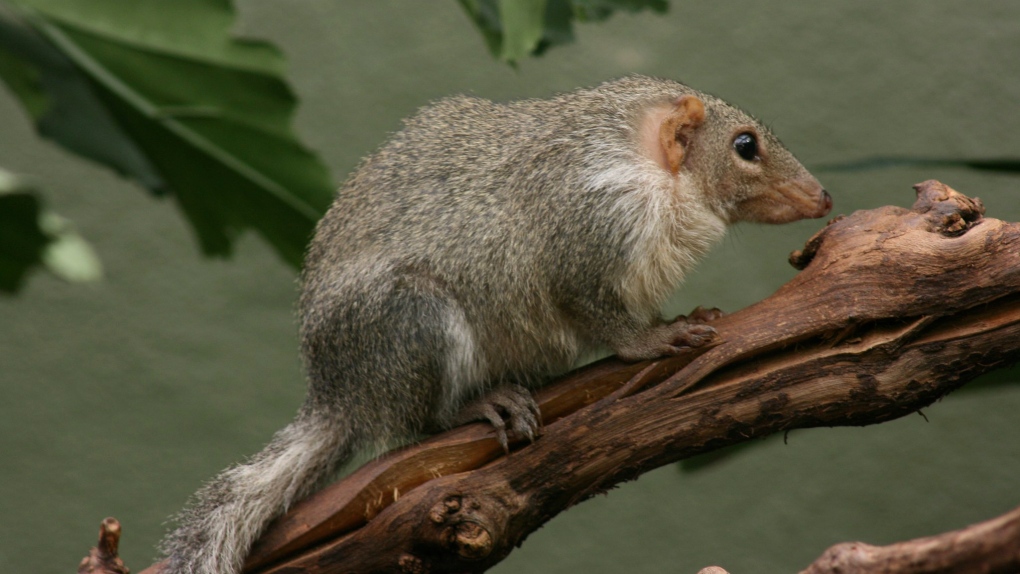Viruses Leaping the Species Barrier
"[The Langya virus does not appear to] look like a repeat of COVID-19 at all.""[The new virus is far less lethal than other henipaviruses and] probably doesn't transmit easily from human to human.""[But this discovery serves as] yet another reminder of the looming threat caused by the many pathogens circulating in populations of wild and domestic animals that have the potential to infect humans."Francois Balloux, computational systems biology professor, University College London
 |
| An Ussuri white-toothed shrew. Scientists in China have detected a novel virus in the species. |
Zoonotics -- viruses that are endemic to animal species and that cross the animal-human barrier to infect humans, are not uncommon, since an estimated 70 percent of emerging infectious diseases in humans are of zoonotic origin. On the very tail end of humanity's global bout of infection with the SARS-CoV-2 virus that causes COVID-19's many variants and sub-variants, yet another virus appears to have crossed the species barrier to infect humans.
The recent discovery of the Langya virus infecting 35 patients in two eastern Chinese provinces has drawn attention by medical scientists. Researchers based in China, Singapore and Australia have produced a study published in the peer-review New England Journal of Medicine, detailing the Langya virus's discovery. The researchers failed to find evidence the virus was transmitted between people, possibly due to the small sample size studied.
The hypothesis reached by the researchers is that before the virus was found in humans it was likely to have been hosted by shrews. Tiny mammals forced to consume their body weight in insects to feed their high metabolic rate, on a daily basis. The first sample of the Langya virus was from a farmer in Shandong province in late 2018 looking for medical treatment for a fever. In a two-year period that followed, another 34 people were found with the infection in Shandong and neighbouring Human, mostly among farmers.
The pathogen, according to genetic sequencing of the virus, is within the family called henipavirus within which group five other known viruses are identified, two considered highly virulent, associated with high case-fatality ratios. None of the Langya patients identified died of their condition, according to the study.
Of the 35 patients, 26 were infected only with the Langya virus and all of the 26 featured fever, half of them in addition showing fatigue, decreased white blood cell count and cough. Impaired kidney and liver function are among the more severe symptoms of the virus affecting the group.
The virus's genetic material was "predominantly detected" in shrews, leading the team of researchers to suggest it is these small mammals that represent a "natural reservoir for the virus", after they had tested 25 other small wild animal species for the Langya virus. There was no detection of sources of exposure common among those infected.
 |
| A shrew is seen in this 2019 photo. (Hyun-tae Kim/WikiMedia/ |
"From a medical and scientific perspective, there is a concern because we need to understand how distributed is this virus. And more importantly, what's the range of disease severity that you can get with this virus? And that's what we don't know.""I think what we need to do is let the medical and scientific community focus on their concerns and get that information. Because until we have that information, there's really no need to panic.""One of the things that Nipah virus [another henipavirus virus] can do in addition to the flu symptoms, is it can actually infect the lungs or give you pneumonia. But more importantly, it can also infect the brain,""Unfortunately, we have no drugs or vaccines against Nipah virus. We certainly have nothing against this new Langya virus and that question mark is a concern.""Animals and insects … they have a habitat, they have a niche. And they also have their own biome, in a sense that they have germs, viruses and bacteria and other stuff that's inherent to them.""Human encroachment into the environment has consequences to human health."Dr. Donald Vinh, infectious disease specialist, McGill University Health Centre, Montreal
Labels: China, Emerging Cases, Langya Virus, Study

0 Comments:
Post a Comment
<< Home